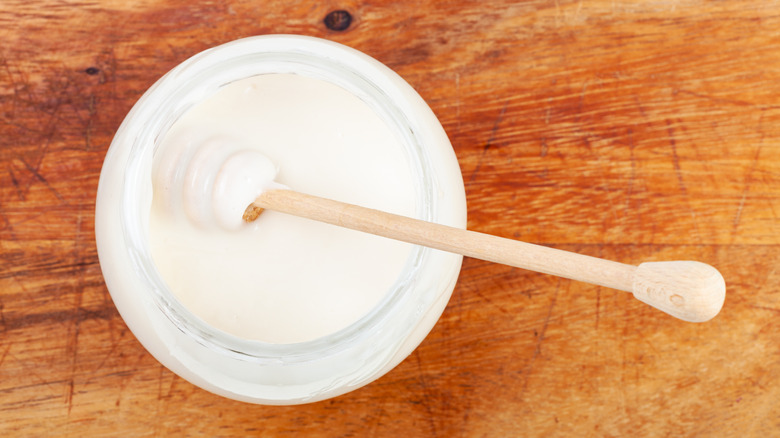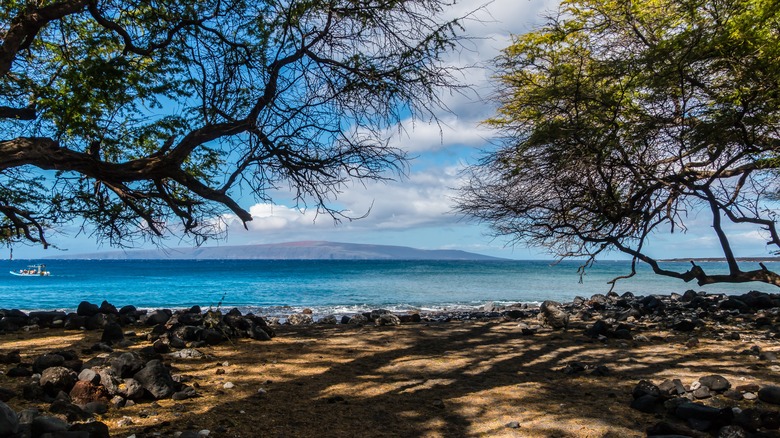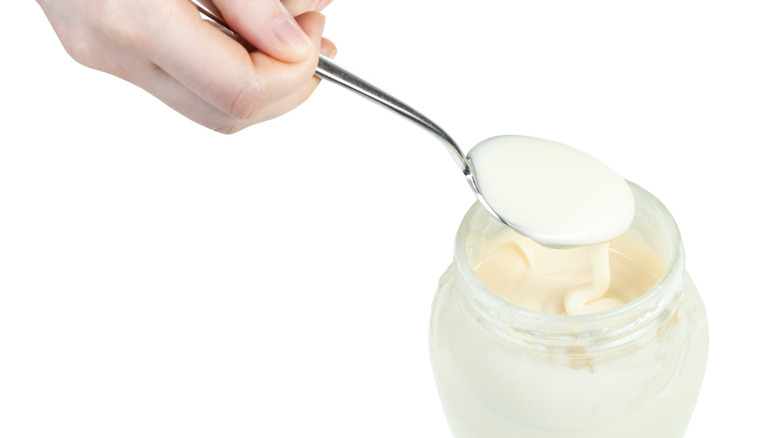The Hawaiian White Honey That Technically Shouldn't Exist
Not all honeys are created equal. Certain varieties are much rarer than others, and they can fetch astoundingly high prices at the market (if you can even find them in the first place). A famous example is Manuka honey, which has been promoted for various health benefits and costs around $60 per pound. What makes a honey like this so rare? It typically comes down to the nectar source.
Bees make honey from the sugary nectar they collect from flowers, and the type of flowers they feed on make a huge difference in the final product. The rarer the flower, the more valuable the honey, and some types only come from very small regions.
Beekeepers go to great lengths to make sure their hives have access to certain flowers. In Tasmania, for example, bees are airlifted to leatherwood forests so they can feed on the rare flowers. The most telling difference between all these types of honey, both common and rare, is their hue. Honey comes in different colors depending on the nectar source, and some of the most prized are noted for their unusual shades. Most fall somewhere in the gold-to-amber range, but have you ever seen white honey? It's only produced in a 1,000 acre range on the island of Hawaii, making it one of the rarest honeys in the world. This is kiawe honey, and the strangest thing about it is that it shouldn't exist in the first place.
Kiawe honey is made from non-native flowers
The bees that make kiawe white honey get nectar from a type of mesquite tree also called the kiawe, scientifically known as Prosopis pallida. The strange thing is, neither honeybees nor kiawe trees are native to the islands. In 1827, Father Alexis Bachelot became the first Catholic missionary to travel to the Hawaiian Islands, and he happened to bring with him a particular seed collected from the Royal Garden in Paris, France. He planted it on the Mission grounds in Honolulu, where the Cathedral Basilica of Our Lady of Peace stands today. This was a Prosopis pallida seed, but it wasn't native to France, either. The species originated in South America, around present-day Peru, Ecuador, and Colombia, and it's known in its native region as huarango.
Usually, introducing a non-native species to a new environment ends in disaster. But every now and then, it works out. A species is only considered invasive if it causes ecological harm, and kiawe trees don't disrupt the region's other species. Since Father Bachelot planted the first one, kiawe trees have spread to all of the Hawaiian islands, flourishing particularly in Puaka Forest, a 1,000-acre region of the Big Island where all white honey is produced.
Of course, making honey requires honeybees, another species not endemic to the islands. It wasn't until 1857, three decades after Father Bachelot's arrival, that honeybees were introduced to the region, completing the magic formula behind the world's most unique honey.
White honey has a unique flavor profile
Kiawe white honey's most distinguishing trait is right there in its name. This honey has a light, creamy shade and is notably completely opaque, something you typically don't find in more common varieties. If it weren't for the label on the jar, your brain would never register it as honey until you got a taste.
Even then, white honey has a flavor you won't experience elsewhere. It has a slight nuttiness that's sometimes likened to almonds and a distinct sense of vanilla. Most unexpected is the aftertaste, leaving a hint of menthol in your mouth. Its texture is just as distinct as its color and flavor, being exceptionally smooth and creamy. Kiawe honey is best enjoyed by itself, spread across some toast or perhaps a crumpet or biscuit.
Because it's so rare, your best bet for getting your hands on a jar of kiawe white honey would be to order it directly from one of the island's producers. Keeping up the demand for kiawe honey may actually benefit the environment, as it incentivizes producers to maintain and protect the Puaka Forest. In 2007, a wild fire wiped out around half of the entire tree population, and the bees have been threatened by invasive mites. As improbable as it may sound, these foreign species have now become integral parts of Hawaii's environment, and they need to be nurtured.


